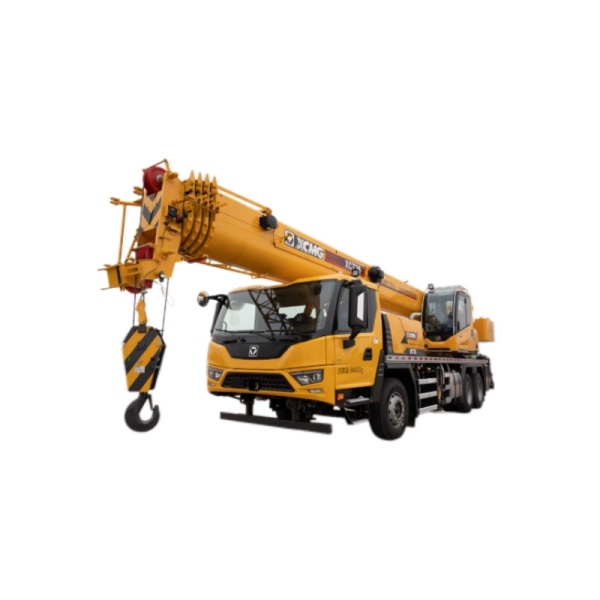Cranes, a vital piece of equipment in the industrial field, are widely used. On construction sites, they are “strongmen” that can easily lift tons of building materials and make great contributions to the construction of high-rise buildings. At ports and docks, they are the guarantee of efficient operation, quickly loading and unloading containers, and facilitating the smooth flow of international trade. At mining sites, they can lift heavy ores and greatly improve mining and transportation efficiency. In bridge construction, they accurately place each key component to ensure the stability and safety of the bridge.
Whether it is the production workshop of a large enterprise or the emergency site of disaster relief, cranes always play an irreplaceable role with their powerful lifting capacity and flexible operating performance, and have become an indispensable force in promoting the development of modern society.
1. Main classification of cranes
1. By structural form
(1) Bridge crane: It runs across the workshop track and has high stability. Bridge crane is used in fixed places such as workshops and warehouses.
- Single-beam bridge crane, light structure, lifting capacity <20T; suitable for small and medium-sized workshops, light truck lifting.
- Double-beam bridge crane has strong load-bearing capacity (up to hundreds of tons) and is equipped with an independent cab. It is suitable for steel plants and heavy machinery manufacturing workshops.
(2) Gantry crane: A ground track structure with outriggers and a large span, suitable for loading and unloading in open cargo yards and ports.
- Rail-mounted cranes run on fixed tracks and are suitable for long-distance transportation; they are suitable for transporting steel plates in shipyards.
- Tire crane: trackless movement, strong flexibility; suitable for temporary lifting at construction sites.
(3) Tower crane: vertical tower + horizontal boom, with obvious height advantage, commonly used in high-rise construction sites and bridge projects, and with a wide arm length coverage range.
(4) Mobile crane: It has its own powered mobile device and excellent maneuverability. It is suitable for short-term operations and is often used for emergency rescue and field operations.
- Truck crane: Based on truck chassis, it has high road speed. It is suitable for urban construction sites and equipment installation.
- Crawler crane: The crawler chassis has a large ground contact area and is suitable for soft ground. It is suitable for lifting heavy equipment in mines and oil fields.
2. By functional use
(1) General crane: standard configuration, meeting the needs of conventional lifting operations.
(2) Special crane:
- Metallurgical crane (high temperature resistance), anti-magnetic interference. Suitable for steel ladle handling and continuous casting machine maintenance in steel plants.
- Explosion-proof crane (chemical scene), full explosion-proof electrical components, spark-free structure, suitable for hazardous environments in chemical plants and oil and gas storage tank areas.
- Insulated crane: The hook and the crane body are insulated. Suitable for maintenance of high-voltage substation equipment.
- Clean room crane: dust-free design, stainless steel material, sealed bearings. Suitable for semiconductor workshops and sterile pharmaceutical production lines.
2. Key factors for choosing a crane
1. Load capacity: Select the model according to the maximum lifting weight and operating frequency.
2. Working environment:
- Indoor/outdoor (wind and corrosion protection requirements).
- Special environment (explosion-proof type is required for high temperature, flammable and explosive scenes).
3. Span and height: match the size of the work site.
4. Energy efficiency and cost: Electric cranes are energy-efficient and have low maintenance costs for hydraulic systems.
3. Safety operation specifications of cranes
1. Pre-operation inspection:
- Check whether the wire rope, brake and limit device are normal.
- Check that the hook has no cracks and the lifting device has no deformation.
2. Notes during operation:
- Overloading, oblique pulling and sudden speed changes are strictly prohibited.
- Keep the suspended object stable and avoid people and obstacles.
3. Emergency handling:
- -The backup brake is activated immediately in the event of a power failure.
- In case of sudden failure, press the emergency stop button and contact maintenance personnel.
4. Daily maintenance and care of cranes
1. Regular lubrication: Add lubricating oil to gears, bearings and other moving parts periodically.
2. Inspection of wearing parts:
- Wire rope: Check for wear and wire breakage every month.
- Brakes: Adjust the clearance to ensure sensitive braking.
3. Electrical system maintenance: clean the dust in the control box and check the insulation of the lines.
As the “skeleton” of modern industry, cranes have been used in core areas such as construction, energy, transportation, and manufacturing, and continue to evolve towards intelligence and greenness. In the future, with the advancement of globalization strategies, cranes will play an irreplaceable role in more scenarios.
#Balancing valve #SSX50.ft Valve Body #Throttle bracket #Spherical bearing GE80ES
How to buy truck crane maintenance related accessories at CCMIE?
If you need to buy truck crane accessories or a new truck crane, you can contact us. If you need to buy a second-hand truck crane, you can also contact us. CCMIE provides you with comprehensive truck crane sales services.
Post time: Mar-05-2025

